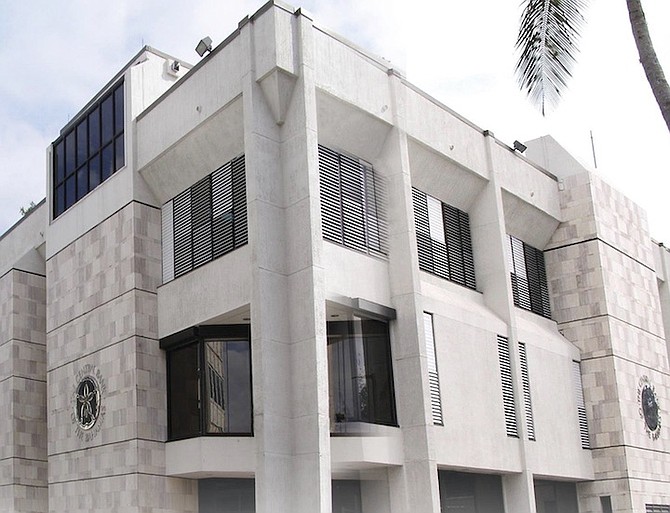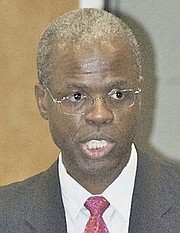By NEIL HARTNELL
Tribune Business Editor
nhartnell@tribunemedia.net
The Central Bank aims to explore the Sand Dollar’s use outside The Bahamas within the next three years, it was revealed yesterday, with 20 percent of this nation’s adults having no bank account.
An International Monetary Fund (IMF) paper on central bank-backed digital currencies noted that there were “around 20,000 active Sand Dollar” electronic wallets in The Bahamas by late 2021 just over one year after the digital currency’s October 2020 launch.
While the Central Bank has previously stuck firmly to its position that the Bahamian digital dollar can only be used domestically within this nation’s borders, the paper said it was already considering whether to expand its usage into cross-border transactions.
“The Bahamas does not currently allow the Sand Dollar to be used outside its borders. It has stated that the Sand Dollar is exclusively intended for domestic purposes and that cross-border payments must take place through commercial banks in traditional non-central bank digital currency Bahamian dollars,” the report said.
“However, foreigners can own and pay with Sand Dollars when visiting The Bahamas after registering for an account with a low limit on both balances and monthly transactions. Nevertheless, the Central Bank is planning to explore cross-border functionality for the Sand Dollar within the next three years.”
John Rolle, the Central Bank’s governor, could not be reached for comment before press time last night despite phone calls and messages being left. However, he last week told the regulator’s 2021 economic developments conference that the Central Bank was focused on increasing the Sand Dollar’s “visibility” and connectivity to the domestic banking system.;
“In so far as the Sand Dollar is concerned, a lot of the focus in the last month or so has been on completing our technical work in integrating the Sand Dollar with the banking platform so mobile wallets can have significant connectivity with deposit accounts,” Mr Rolle said.
“That work is nearing completion. Right now, the Central Bank is recruiting additional persons to begin outreach to the business community and co-ordinate with banks and other payment provider service. That work in the first half of the year will result in the Sand Dollar gaining visibility because we are going to have positive incentives to enroll the population.”
Mr Rolle said this would enable the Sand Dollar to “target Family Island communities and average users” for new electronic wallet users, and he added: “In terms of the size and impact of the Sand Dollar on the economy, we’ve not had a shift relative to where we were in the third quarter and fourth quarter [of 2021].
“Now we’re beginning that push, the most important part of which is reaching the businesses to become enrolled in the initiative. We are pushing this quarter, and allowing connectivity to be completed between the Sand Dollar wallet and deposit accounts. That is to be concluded this quarter.”
However, the IMF report revealed that The Bahamas has struggled to find an “off-line” solution to keep the Sand Dollar functioning when the country’s communications network is down, such as during and in the aftermath of a hurricane.
“The Bahamas considers off-line functionality to be vitally important but has encountered difficulties in achieving it,” the Fund said. “The pilot revealed that the planned solution of local off-line networks, built on introducing local redundancies to the main telecommunication system, did not fully achieve the policy goal.
“The telecommunication towers required in the solution are vulnerable to the same weather conditions as the main telecommunication system. Also, the geographical reach of the local networks is limited, which makes it difficult to make payments between islands.
“Presently, the Central Bank is working with its main contractor to identify alternative solutions. Staff at the Central Bank state that the decision to explore alternative off-line solutions was the most significant change that resulted from the practical experience of the pilot.”
No interest is paid on Sand Dollar wallets to ensure there is no competition with bank deposits. “The Central Bank created a new unit devoted to developing the Sand Dollar but under the supervision of a policy steering committee made up of representatives from the different departments of the bank,” the IMF report said.
“At its peak during the launch, the Sand Dollar employed 35 people at varying levels of time commitment. Currently, 15 people work full-time on the Sand Dollar.”
“Most of the six jurisdictions in this survey identify financial inclusion as a top policy goal,” the Fund’s paper said of the digital currency rationale. “In the Bahamas, pockets of the population are excluded from financial services because they live in regions where it is not profitable for commercial actors to operate.
“Approximately 20 percent of the adult population is estimated to have no bank account. Geography exacerbates the problem since The Bahamas consists of many islands, which are costly to serve. In the Bahamas, for example, the island geography creates difficulties in both distributing cash and extending digital infrastructure.
“This is why the Central Bank has listed access to payments, regardless of age, social status, or location, as one of its most important goals.” The IMF described The Bahamas as a “high-cost jurisdiction” for both digital and physical payments, and noted the Government’s challenges in making payments to persons without bank accounts.
“An important additional consideration has been the high cost for government agencies to make cash-based payments to citizens who lack bank accounts,” the IMF paper added. “There are plans to integrate government agencies into the Sand Dollar network to support digital government payments to individuals to lower this cost.”






Comments
ThisIsOurs 2 years, 2 months ago
"There are plans to integrate government agencies into the Sand Dollar network to support digital government payments to individuals to lower this cost.”
Forcing customers is the worst way to innovate. That's what was wrong with the Central Bank's anti-competitive payment provider moratorium from the break.
You'll be able to claim numbers but not adoption. People will cash out.
In competitive environments, innovators look at existing solutions, find the problems and then come with better solitions that a forced monopoly provider confortable in their control would never think of. That's how innovation works but they've essentially choked it off. And they were praised for the approach. Was very baffling.
Sign in to comment
Or login with:
OpenID